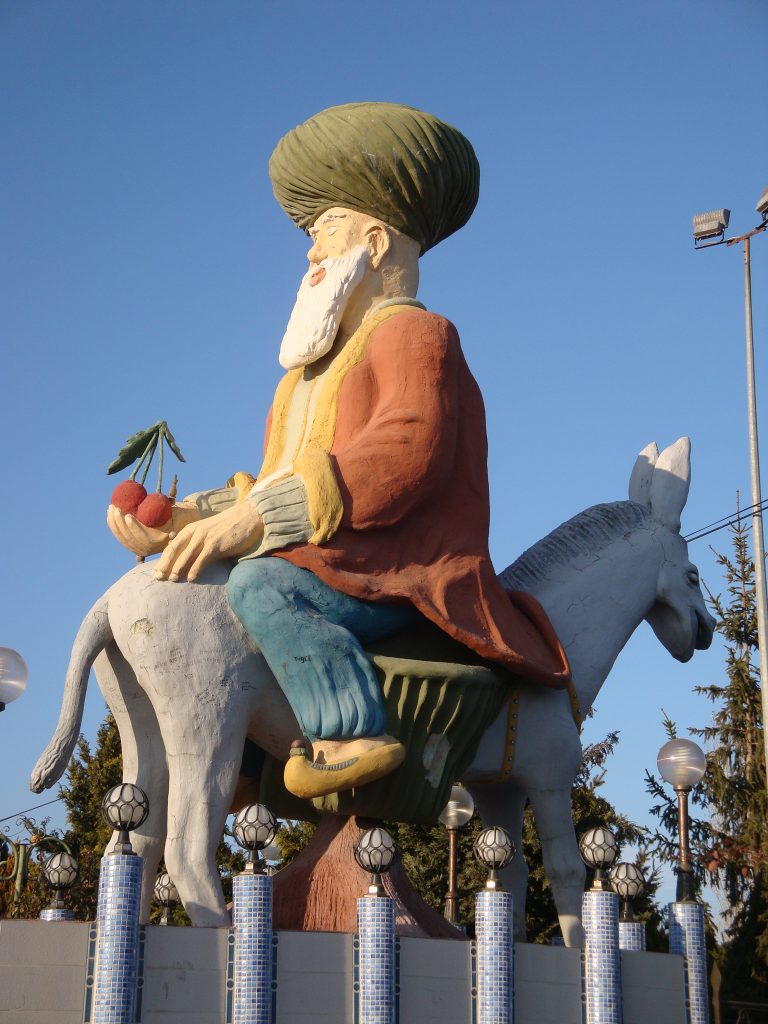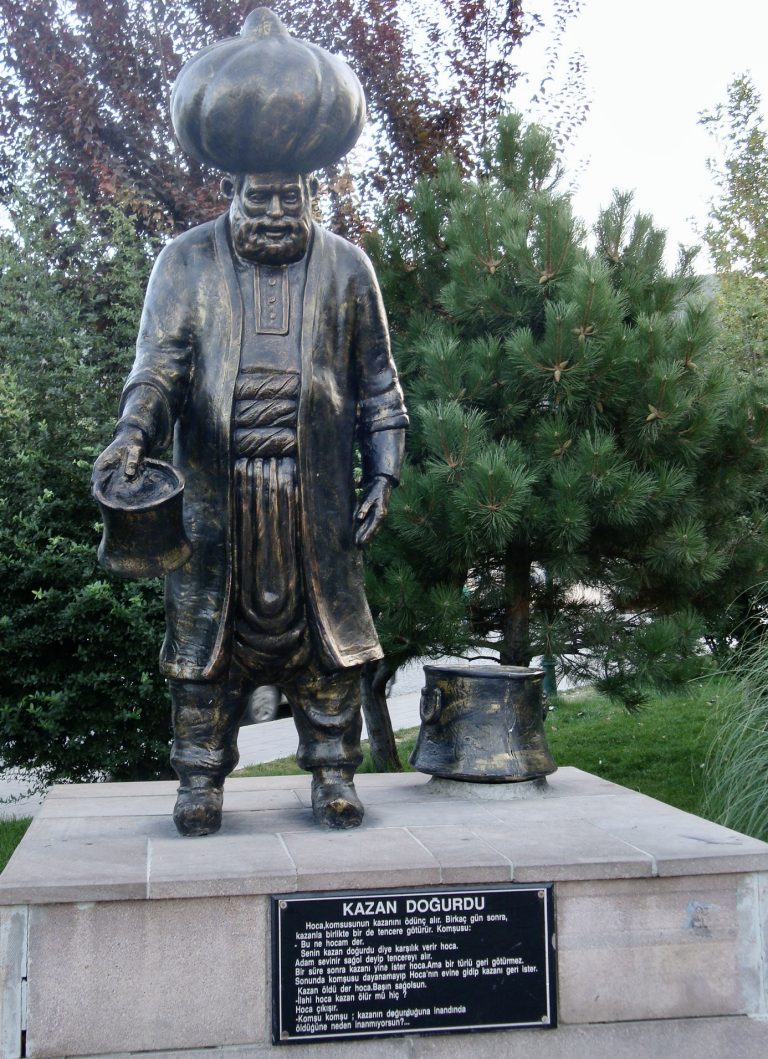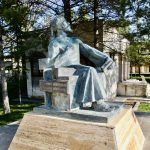Those new to Turkey may have no idea who Nasrettin Hoca is. Everyone else, though, will be well aware of this medieval comedian-cross-philosopher, a kind of Central Asian take on Aesop usually depicted as a bearded middle-aged man of jovial demeanour wearing an outsize turban and sitting back to front on his donkey.
Given the fame of Nasrettin Hoca, it’s surprising that so little that is certain is actually known about him. The story has it that he was born in Nasrettin Hoca village (then Hortu), near Sivirhisar, some time around 1208, and he is believed to have spent much of his life in the area around Konya at the time when the Selçuks were at the peak of their power.
He was thought to have died and been buried in Akşehir. On the tombstone claimed as his the date of his death is given as 386, an in joke since it must be read in reverse to give the true date of 683 (1284/5 according to the Gregorian calendar). The structure protecting the tomb was only erected in 1905 although it’s believed to imitate an earlier version. However, in 2013 a report suggested that a more convincing tombstone had been discovered in the Ulu Cami of Sivrihisar.
The first known manuscript of his stories dates back only to 1571, and it’s obvious that many stories that carry his name long post-date his lifetime. But, like Aesop’s fables, their staying power has to do with the clever way in which they combine a pretty story that would appeal to a child with more complex layers of meaning capable of intriguing an adult.
Perhaps the most famous of them tells of a cooking pot, lent by a neighbour to the hoca. When the time came to return it, the hoca popped a smaller pot inside as a thank-you. As the neighbour exclaimed with delight he was told that his cauldron had given birth. Later, the hoca wanted to borrow the pot again but this time he omitted to return it. Eventually the neighbour called to ask for it back. “I’m afraid your pot has died,” the hoca replied, going on to add when the neighbour challenged him: “You believed it when I said that your pot had given birth, so why don’t you believe me now when I say that it has died?”
So famous is this story that the cauldron has become a virtual icon of Nasrettin Hoca. But after studying in Sivrihisar he is believed to have become the imam of Hortu, so another popular story unsurprisingly relates how on his first day in office he stood up in front of the congregation with no sermon prepared and asked if they knew what he was going to talk about. When they said no, he announced that in that case he had nothing to tell them. The next day when he asked the same question the villagers wisely replied that they did know what he was going to say. In which case there was no point in his talking to them, he said. On the third day half the congregation cunningly said they did know what he would say while the other denied it. “Then let those who already know tell those who don’t,” said the hoca.



